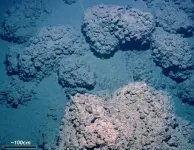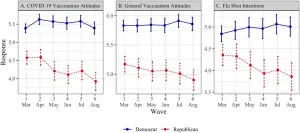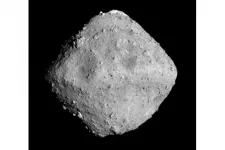(Press-News.org) A collaboration between experts and a Danish-based, global reaching patient organization has resulted in a groundbreaking medical publication, where guidelines are being presented on how to manage patients with unexplained low blood sugar.
Danielle Drachmann, founder of Ketotic Hypoglycemia International (KHI), spent years being dismissed by doctors due to the outdated perception that her children's dangerous low blood glucose (sugar) and high ketone levels were a normal variation.
Professor Henrik Christesen, Head of the Complex Hypoglycemia Center, Odense University Hospital, Denmark, could not identify the cause of the condition despite intense efforts, but recognized the severity of the children's condition and implemented strict monitoring and management guidelines to support the family.
Closing the gap: Uniting the patients and the experts
Henrik and Danielle shared frustrations due to the lack of knowledge of severe, unexplained ("idiopathic") ketotic hypoglycemia across the wider medical field.
This led Danielle to establish Ketotic Hypoglycemia International with Professor Christesen leading the Scientific Advisory Board.
The patient organization gathered leading experts from the fields of endocrinology and inborn errors of metabolism, uniting them with patient representatives from across the globe. The result is a shared publication in the international medical journal Orphanet Journal of Rare Diseases.
Low blood sugar in children is not just normal
For the first time since the term idiopathic ketotic hypoglycemia was coined in 1964, the the condition is now being divided in two, a physiological and a pathological (severe) form.
The key message is that pathological ketotic hypoglycemia of unknown cause is more than normal variation in small children. Pathological ketotic hypoglycemia should be diagnosed and treated as any other disease, according to the authors.
"The problem is that an old perception of ketotic hypoglycemia just being a normal variation of childhood has kept children from getting the medical investigations and help they need. The medical textbooks must be rewritten" Professor Christesen states.
Parents and experts are excited
With this paper, the severity-range of the condition has been recognized and family members are labeling the news of the upcoming paper as life changing;
"Multiple seizures and ER visits, and we are still being told that this is normal for children. The news of the paper gives me hope that Ketotic Hypoglycemia International has started a revolution. Hope for my child's future and hope that our voices are finally going to be heard," proclaims Victoria, a KHI group member from the United States.
Hypoglycemia expert Dr. David Weinstein, the former director of the Glycogen Storage Disease Program in the US and co-author of the paper, states;
"These children deserve to get answers and they deserve proper treatment. My one regret is that I never was able to get the medical field to take ketotic hypoglycemia seriously."
Be a part of the revolution
Ketotic hypoglycemia is placed somewhere between the two expert fields, pediatric endocrinology and inborn metabolic diseases, as a real orphan disease. The new patient organization has succeeded in bringing experts from the two different medical fields together in this publication.
On top of giving guidelines for diagnosis and treatment, the new patient organization, Ketotic Hypoglycemia International, is presented in the paper.
The organization urges all medical professionals to increase their knowledge and improve their clinical practice by reading this crucial publication about ketotic hypoglycemia,
The organization aims to help this misunderstood patient-group gain access to critical medical supplies, referrals to specialist providers and finally receive the professional validation that their symptoms warrant a full investigation.
"It's been a fantastic journey from feeling alone with two untreated children to become recognized together with hundreds of other families as having a real disease that deserves treatment", first author Danielle Drachmann says.
Facts about ketotic hypoglycemia
In ketotic hypoglycemia, the glucose metabolism works poorly, which is why the body switches to fat burning more quickly. The poor glucose metabolism results in low blood sugar (hypoglycemia) and the increased fat metabolism results in ketone bodies such as acetone. A patient can therefore directly smell of acetone if he or she has an attack of ketotic hypoglycemia. Both sugar and fat burning are enzymatic processes controlled by a number of hormones. In order to have unexplained (idiopathic) ketotic hypoglycemia, a number of enzyme defects in cell metabolism and a number of hormonal diseases must be ruled out. However, an explanation can be found in some of the patients if the cases are being investigated thoroughly, including major genetic analysis packages.
Over the past ten years, Henrik Christesen has met about 100 children with ketotic hypoglycemia and 15 parents who also had the condition in adulthood. Based on the new research, he estimates that 150 new children and adults annually need medical investigation due to hypoglycemia in Denmark alone.
INFORMATION:
Facts
For more information on ketotic hypoglycemia, see educational materials for both healthcare professionals and families on Ketotic Hypoglycemia International's YouTube channel: https://m.youtube.com/channel/UCOKK0J3HarsfX_MdFN6vC3w
The Patient Organization can be found here: http://ketotichypoglycemia.org
Read the scientific article "Towards enhanced understanding of idiopathic ketotic hypoglycemia: A literature review and introduction to the patient organization, Ketotic Hypoglycemia International" here: Towards enhanced understanding of idiopathic ketotic hypoglycemia: a literature review and introduction of the patient organization, Ketotic Hypoglycemia International | Orphanet Journal of Rare Diseases | Full Text (biomedcentral.com)
For further information or request for collaboration, please contact Danielle Drachmann at danielle.drachmann@ketotichypoglycemia.org and / or Professor Henrik Christesen at henrik.christesen@rsyd.dk
The SARS-CoV-2 virus is still causing a dramatic loss of human lives worldwide, constituting an unprecedented challenge for society, public health, and economy, to overcome. Currently, SARS-CoV-2 can be diagnosed in two different ways: i) antigen tests (point-of-care, POC) and ii) molecular tests (nucleic acid, RNA, or PCR-polymerase chain reaction). Antigen tests can detect parts of SARS-CoV-2 proteins, known as antigens, via a nasopharyngeal or nasal swab sampling method. The main advantages of POC-test include the high specificity, quick response (less than an hour), and portability, with no need of fixed laboratory facilities. On the other hand, in a molecular diagnostic test, a reverse transcriptase polymerase chain reaction (RT-PCR) is evolved, also known as nucleic ...
A research group working at Uppsala University has succeeded in studying 'translation factors' - important components of a cell's protein synthesis machinery - that are several billion years old. By studying these ancient 'resurrected' factors, the researchers were able to establish that they had much broader specificities than their present-day, more specialised counterparts.
In order to survive and grow, all cells contain an in-house protein synthesis factory. This consists of ribosomes and associated translation factors that work together to ensure that the complex protein production process runs smoothly. While almost all components of the modern translational machinery are well known, until now scientists did not know how the ...
Toxic pollution hits poorer populations hardest as firms experience more pollutant releases and spend less money on waste management in areas with lower average incomes.
Research from Lancaster University Management School and Texas Tech University, published in European Economic Review looked into the relationship between the location choices of potentially polluting firms and levels of local income to discover if firms made strategic decisions on site locations based on population demographics.
The team studied potentially polluting firms across Texas, and found a correlation between lower income locations and the probability of potentially polluting firms choosing to locate there. Their data, from the US Environment Agency's Toxic Release Inventory also ...
Ice ages are not that easy to define. It may sound intuitive that an ice age represents a frozen planet, but the truth is often more nuanced than that.
An ice age has constant glaciations and deglaciations, with ice sheets pulsating with the rhythm of changing climate. These giants have been consistently waxing and waning, exerting, and lifting pressure from the ocean floor.
Several studies also show that the most recent deglaciation, Holocene (approximately 21ka-15ka ago) of the Barents Sea has had a huge impact on the release of methane into the water. A most recent study in Geology looks even further into the past, some 125 000 years ago, and contributes to the conclusion: Melting of the Arctic ice sheets drives the release of the potent greenhouse ...
New Haven, Conn. -- The choice between two non-invasive diagnostic tests is a common dilemma in patients who present with chest pain. Yale cardiologist Rohan Khera, MD, MS, and colleagues have developed ASSIST©, a new digital decision-aiding tool.
By applying machine learning techniques to data from two large clinical trials, this new tool identifies which imaging test to pursue in patients who may have coronary artery disease or CAD, a condition caused by plaque buildup in the arterial wall.
The new tool, described in a study published April 21 in the European Heart Journal, focuses on the long-term outcome for a given patient.
"There are strengths and limitations ...
Individuals who self-identify as Republicans became more skeptical of a potential COVID-19 vaccine and other inoculations, such as the flu shot, over the course of the pandemic, reveals a new study by the University of California San Diego’s Rady School of Management.
The paper, published in PLOS ONE, measured general attitudes toward vaccines and assessed whether study participants would get a potential COVID-19 vaccine as well as the seasonal flu shot. It also gauged trust in media.
“We found Republicans became increasingly vaccine hesitant and less trusting of media from March to August of 2020, while Democrats’ views on ...
LONDON, ON - In a published study, a team from Lawson Health Research Institute has found that a simple device can reduce swelling after kidney transplantation. The geko™ device, manufactured by Sky Medical Technology Ltd and distributed in Canada by Trudell Healthcare Solutions Inc., is a muscle pump activator which significantly improves blood flow by stimulating the body's 'muscle pumps.' Patients using the device following kidney transplantation experienced shorter hospital stays and reduced surgical site infections by nearly 60 per cent.
Kidney and simultaneous pancreas-kidney transplantations ...
Scientists have recreated the reaction by which carbon isotopes made their way into different organic compounds, challenging the notion that organic compounds, such as amino acids, were formed by isotopically enriched substrates. Their discovery suggests that the building blocks of life in meteorites were derived from widely available substrates in the early solar system.
Their findings were published online in Science Advances on April 28, 2021.
Carbonaceous meteorites contain the building blocks of life, including amino acids, sugars, and nucleobases. These ...
Scientists from Stony Brook University and the Max Planck Institute of Animal Behavior have pieced together a timeline of how brain and body size evolved in mammals over the last 150 million years. The international team of 22 scientists, including biologists, evolutionary statisticians, and anthropologists, compared the brain mass of 1400 living and extinct mammals. For the 107 fossils examined--among them ancient whales and the oldest Old World monkey skull ever found--they used endocranial volume data from skulls instead of brain mass data. The brain measurements were then analyzed along with body size ...
Within the past decade, next-generation sequencing technologies have revolutionized the way in which genetic data are generated and analyzed. In the field of phylogenetics, this has meant that researchers are rapidly reconstructing the tree of life, a goal that biologists have been working toward since Darwin sketched the first phylogeny in his notebook in 1837.
Yet despite the relative ease with which DNA can now be sequenced in large quantities, scientists must first extract that DNA from an organism, often relying on vast numbers of curated specimens ...








